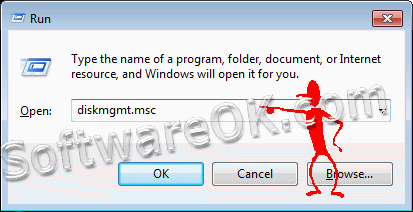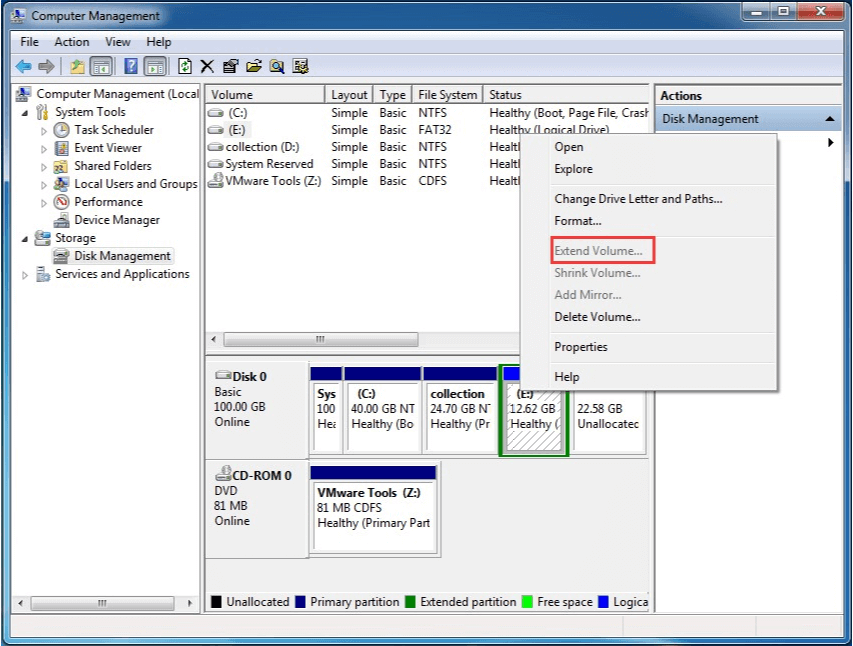

- #WINDOWS 7 DISK MANAGER COMMAND HOW TO#
- #WINDOWS 7 DISK MANAGER COMMAND MANUAL#
- #WINDOWS 7 DISK MANAGER COMMAND FULL#
- #WINDOWS 7 DISK MANAGER COMMAND WINDOWS 10#
Windows Disk Management Availability: Windows 2000, Windows XP, Windows Vista, Windows 11, Windows 10, Windows 8, Windows 7, and all Windows Server versions.ĭisk Management seems like a powerful software available on all Windows versions. Starting with Windows Vista, disk management is integrated into the Computer Management console. In older versions of Windows, disk management was accessed through the Disk Administrator tool. The main goal of disk management is to optimize disk space use and improve the system's performance. It works to manage disk drives and partitions in a computer system. Windows Disk Management is a software utility in Microsoft Windows that provides a graphical interface for disk management. This guide won't provide the obscure terminology that swirls your mind but makes it easier for novices to understand Windows 10/11 disk management and its feature, steps to run it and fix errors without hassle. If you are interested in learning the ultimate overview of the basics of disk manager utility according to our latest practice, you are in the right place.
#WINDOWS 7 DISK MANAGER COMMAND MANUAL#
You may be a beginner at using the manual way to partition a targeted device or a user who has a half-baked idea for getting everything in the disk management Windows 10/11, this guide is written for you. If you decide to manage disks or partitions via Windows Disk Management, this guide is meant for you. People Also Ask about Disk Management About Disk Management? Who Is This Guide for? Troubleshooting of Disk Management Windows 10/11 Error
#WINDOWS 7 DISK MANAGER COMMAND HOW TO#
How to Use Windows Disk Management to Set Up Hard Drive? How to Open Disk Management in All Windows PC? It's best to just leave them alone to do their jobs starting your PC and helping you recover from problems.About Disk Management? Who Is This Guide for?

#WINDOWS 7 DISK MANAGER COMMAND FULL#
These partitions are generally pretty full with really important files your PC needs to operate properly.
:max_bytes(150000):strip_icc()/2017-06-162-59444c963df78c537bfce413.png)
Windows operating system drive (C:) - This is where Windows is installed, and usually where you put the rest of your apps and files.
_thumb_2.png)
EFI system partition - This is used by modern PCs to start (boot) your PC and your operating system.In case you're curious (we've read your comments!), Windows typically includes three partitions on your main drive (usually the C:\ drive): To take multiple hard drives and pool them together, similar to a RAID, see Storage Spaces.
#WINDOWS 7 DISK MANAGER COMMAND WINDOWS 10#
To defragment your drives, see Defragment your Windows 10 PC.To free up disk space, see Free up drive space in Windows 10.Here are some common tasks you might want to do but that use other tools in Windows: If you have feedback on how to improve these topics, we'd love to hear from you! Just answer the Is this page helpful? prompt, and leave any comments there or in the public comments thread at the bottom of this topic. If that doesn't help - don't panic! There's a ton of info on the Microsoft community site - try searching the Files, folders, and storage section, and if you still need help, post a question there and Microsoft or other members of the community will try to help. If you get an error or something doesn't work when following these procedures, take a peek at the Troubleshooting Disk Management topic.


 0 kommentar(er)
0 kommentar(er)
